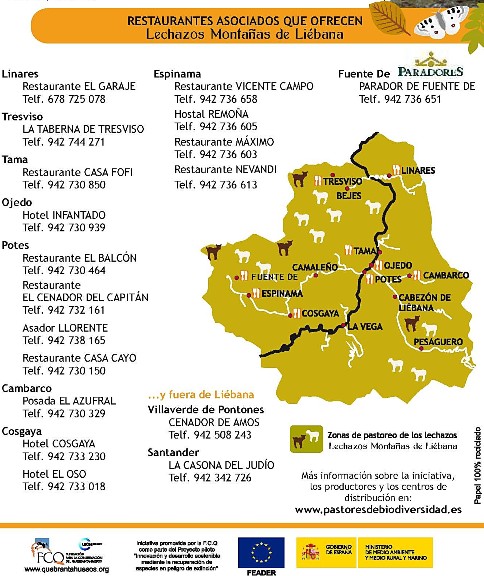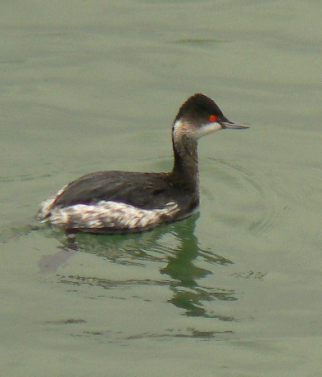Last summer a new Lammergeier, a male named Atilano, was introduced to the Picos de Europa to join the remaining female, Deva, of the project run by the Bearded Vulture Foundation.
As of last December, at least, he appears to be doing well as proved by this photo of him taken by Javier Gil of Birdwatching Asturias.

Photo ©Javier Gil
Another project has been started to support the reintroductions, to ensure a decent price for the farmers' products and for it to be sold to local restaurants, Lechazos Montañas de Liébana, Lamb from the Mountains of Liébana. If you'd like to support the initiative while you're holidaying in the Picos de Europa, here's a list of restaurants collaborating in the project;

In Asturias a visitor's centre has been opened in Benia de Onís with a modest 3€ entrance fee.
While we're in Asturias, the Cantabrian Capercaillie breeding project based in Sobrescobio is receiving mixed results with a high mortality rate among the eggs hatched. (The remaining wild birds in the Cantabrian mountains currently have a successful production rate of an average of less than 0,4. per breeding female due to various factors: general health of the females, depredation of eggs and chicks, very wet spring weather conditions and, surely, a low level of genetic diversity).

Photo of chicks in the breeding centre in Sobrescobio, La Nueva España.
At present there are three breeding pairs of which one female and one male were bred at the centre. The rest were collected as eggs from the wild. Although in 2011 nine chicks were succesfully raised, in 2012 the number dropped to just one chick bred leaving a total of fourteen birds. The breeding centre is also, apparently, suffering from lack of funding with only one working biologist.
On the bright side, SEO/Birdlife organise annual work in the field including clearing thick undergrowth to favour the spread of the key foodplant species, the bilberry, Vaccinium myrtillus.
Cormorants, meanwhile, are being threatened by Asturian fishermen who are calling for their erradication (along with herons and otters!) from what they perceive to be "their rivers" for stealing "their" fish. See La Crónica Verde.











